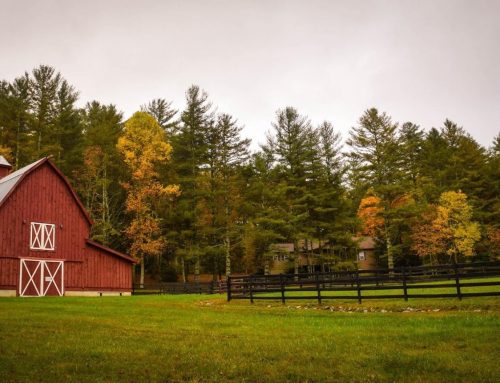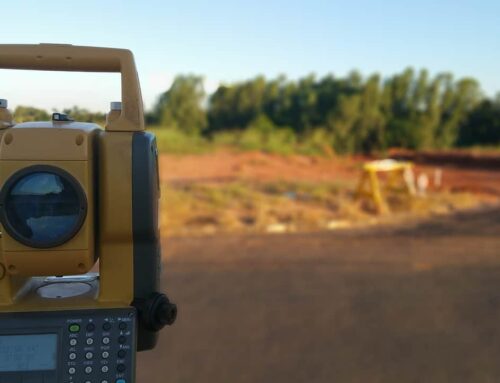Zoning at its core is the tool a city planner uses to design and develop a town or village into a city. A skilled city planner will keep in mind the community’s dominant industry, population, growth rate, and industry need. By drafting a city plan based on the many zoning categories created by the state or county, the planner can efficiently and effectively develop a balanced city. This guide will explain the difference in each zoning category, how zoning is decided, issues that may arise from the zoning changes and the overall purpose of zoning itself.
Are you in need of land services? Millman offers exactly what you need.
What is Zoning?
Zoning is how the local government regulates and develops land within its control. It is broken down into multiple categories to help balance a city to ensure proper land use and provide value to citizens that own property. As well, zoning helps protect the local environment and keep property values stable.
Related: Planning and Zoning
Types of Zoning
Zoning is a complex system, but it is easily broken down into broad categories to help city planners and other interested parties understand how a city is divided. While most only know of commercial, residential, and industrial zones, there are several more to be aware of:
Commercial
Commercial zoning primarily refers to businesses of the non-industrial nature, such as office buildings, shopping centers, nightclubs, and hotels. Laws or regulations may exist to ban or limit adult entertainment businesses, such as gentleman’s clubs and taverns, to some geographical regions. Typically, these businesses must be a certain distance from existing schools, churches, or parks.
Industrial
Similar to commercial zoning, industrial zoning focuses on business. However, the difference is that industrial zoning regulates companies based on environmental factors, such as noise, air quality, and use. Typical businesses designated to industrial sectors include airports and manufacturing plants. Lastly, unlike commercial zones, set-back requirements are higher for industrial zoned properties.
Residential
Residential zoning regards the building of residential structures, including single-family residences, apartments, mobile homes, and condominiums. Residential zoning laws typically regulate the use of residential lands, such as prohibiting the keeping of farm animals in a suburban neighborhood and limiting construction projects.
Agricultural
Agricultural zoning refers to mostly agricultural communities. This zoning type limits the density of development and restricts the non-agricultural use of land within this zone. Density is typically controlled by setting sizeable minimum lot sizes, but it may vary depending on the type of operations to take place on the property. Lastly, the purpose of this zoning type is to protect farming communities from fragmentation brought on by commercialization and housing development.
Aesthetic
While the least common zoning type, aesthetic zoning is most prevalent in upscale and planned communities. This type of zoning places strict regulations on construction and landscaping. The purpose of this type of zoning is to keep a uniform look and quality to a community.
Historical
Historical zoning pertains to properties or structures considered to have historical or cultural value to the community, thus worthy of preservation. This often includes homes of prominent historical figures, structures connected to historical events such as battles, etc. This type of zoning prevents changing the site or structure from its original condition. Of course, there are usually allowances for repair and restoration if the aim is to restore the original condition. Also, buildings in these zones may qualify for tax incentives and may be applicable for the National Register of Historic Places.
Rural
Rural zoning generally classifies land away from cities that are being used for ranching and farming. In most parts of the country, rural zones include the homes and buildings found on these properties, such as grain mills and barns.
Combination
A combination zone is any piece of land with a mix of two or more types of zones. For example, a residential neighborhood with a small collection of businesses mixed in among residential structures like homes and apartments.
What is the Purpose of Zoning?
The purpose of zoning is simple as it was designed to ensure balanced communities. Zoning allows the government to control the development of the land and ensure the public is satisfied with their community. For example, by ensuring industrial zones are a safe distance from residential areas, the negative impact of industrial zones is limited for residents. Also, zoning allows for the proper use of the land, enables the community to develop infrastructure adequately, and protects existing property from destruction or devaluation.
Related: Millman Blog
Who Makes Zoning Decisions?
The control of zoning is typically handled by the city council, but can also be overseen by the county. State statutes precedent for zoning laws and regulations by giving local authorities the ability to set general zoning. Therefore, zoning laws and regulations may vary between cities and counties depending on what industry is most plentiful or county authority. For example, if the county lacks general zoning regulations, cities and towns can develop their general zoning. Countries can also set zoning regulations specific to unincorporated towns and land while allowing municipalities to decide zoning rules within their borders.
Related: About Us
Zoning Disputes
Zoning laws and regulations are often subject to change, especially as a community grows, and a new industry becomes dominant, such as when an agricultural community becomes more commercial or industrial. Sudden, or even planned changes, can create issues between the city or county and the citizens. For example, should the city or county decide to rezone an agricultural zone to develop a commercial zone, some farmers or ranchers may resist the change leading to zoning issues. Another issue that may arise is a zone violation, such as an industrial company dumping toxic waste in zones where such activity is illegal.
Typically, zoning disputes are settled through class action lawsuits. These lawsuits generally end with a court injunction ordering a settlement of the issue after a hearing before a judge. Depending on the issues that sparked the lawsuit, one part may receive damage awards or be allowed to retain its original zone designation.
Final Thoughts
As expected of city planning, zoning is a complex task that must be handled with care and intelligence. While the state typically sets zoning regulations, the county and city are often given the authority to decide on their own zoning rules and regulations. Still, this authority is only viable within their borders.
The purpose of zoning is to create a well-balanced community and abide by the community’s needs while taking into consideration population density and growth trends. A wise city planner will notice when a city needs more of one zone than the other and adjust zoning as necessary. Of course, changes in zoning can cause issues among the population and lead to class action lawsuits. However, should zoning be done with the community’s benefit in mind, lawsuits should be minimal, and growth and prosperity are encouraged.
Want to learn more about Millman’s services? Contact us today!









